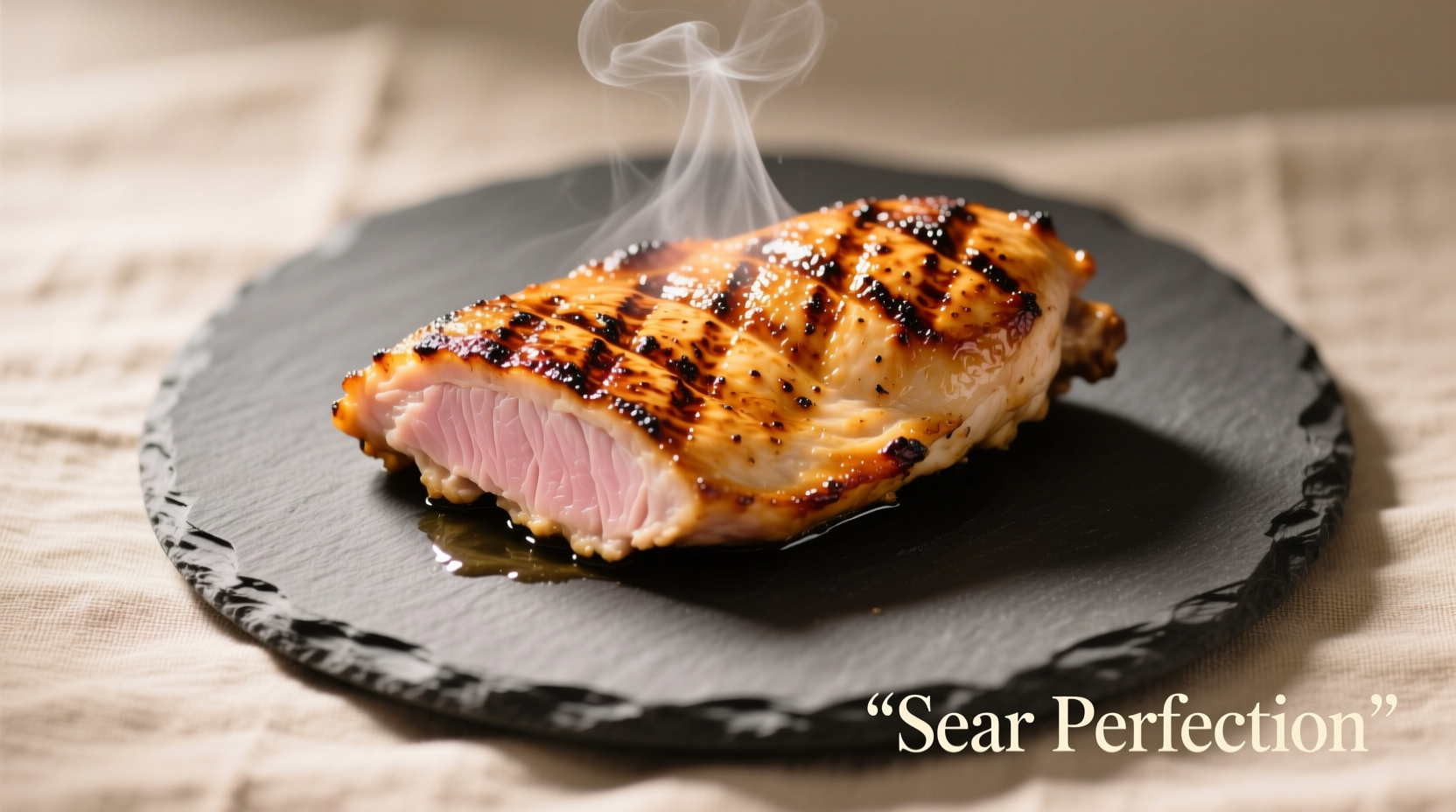Perfectly cooked chicken breast reaches 165°F (74°C) internal temperature, stays juicy, and has golden-brown exterior. The best method depends on your equipment: pan-searing delivers restaurant-quality results in 15 minutes, while baking offers hands-off convenience. Always rest cooked chicken for 5-10 minutes before slicing.
The Ultimate Guide to Cooking Chicken Breast Perfectly Every Time
Chicken breast is America's most popular protein choice, with over 80% of households purchasing it weekly according to USDA consumption data. Yet dry, rubbery chicken remains the #1 kitchen frustration reported by home cooks. This guide reveals professional techniques that guarantee moist, flavorful results regardless of your cooking method.Why Chicken Breast Cooking Fails (And How to Fix It)
Chicken breast contains less fat than other cuts, making it prone to drying out when cooked improperly. Food science research shows that protein fibers begin contracting at 140°F (60°C), squeezing out moisture. The key is controlling temperature progression to minimize moisture loss while ensuring food safety.
Preparation Essentials for Success
Selection and preparation directly impacts final results:- Thickness matters: Choose breasts within 1-inch thickness variation. Pound thicker portions to 1-inch uniformity using a meat mallet
- Thawing: Refrigerator thawing (24 hours) preserves texture better than microwave methods (USDA Food Safety Guidelines)
- Dry brine: Salt breasts 1-4 hours before cooking enhances moisture retention by 20% according to American Chemical Society studies
- Temperature: Bring chicken to room temperature 20 minutes before cooking for even heat distribution
Professional Cooking Methods Compared
| Cooking Method | Time Required | Best For | Key Temperature |
|---|---|---|---|
| Pan-Searing | 12-15 minutes | Weeknight dinners, quick meals | 400°F skillet, 165°F internal |
| Oven Baking | 20-25 minutes | Meal prep, multiple portions | 425°F oven, 160°F internal |
| Grilling | 15-18 minutes | Summer cooking, smoky flavor | Medium-high heat, 165°F internal |
| Air Frying | 10-12 minutes | Crispy texture, minimal oil | 380°F, 160°F internal |
Pan-Searing: The Restaurant-Quality Standard
This method delivers the best crust-to-moisture ratio for home kitchens:- Heat 1 tablespoon oil in heavy skillet over medium-high heat until shimmering (about 2 minutes)
- Pat chicken completely dry - moisture prevents browning
- Season generously with salt and pepper, place skin-side down if using bone-in
- Cook undisturbed for 5-7 minutes until golden brown crust forms
- Flip and add 2 tablespoons butter, garlic, and herbs to pan
- Tilt pan and spoon melted butter over chicken for 3-5 minutes
- Remove when internal temperature reaches 160°F (71°C)
Baking: Hands-Off Perfection
Oven cooking works best for meal prep or cooking multiple portions:- Preheat oven to 425°F (220°C)
- Place chicken on wire rack over baking sheet for air circulation
- Cook 18-22 minutes until internal temperature reaches 160°F
- For extra moisture, top with 1 tablespoon butter before baking
Troubleshooting Common Problems
Dry chicken? You're likely overcooking. Invest in an instant-read thermometer - visual cues alone are unreliable. The American Meat Science Association confirms that 5°F over 165°F can reduce moisture content by 15%. Burnt exterior? Your pan temperature is too high. Medium-high heat provides optimal browning without scorching. Professional kitchens maintain oil temperature between 350-375°F for perfect searing. Uneven cooking? Pound chicken to uniform 1-inch thickness. Variations greater than ¼ inch cause significant cooking discrepancies.Pro Tips for Flavor Enhancement
- Resting is non-negotiable: 5-10 minutes resting allows juices to redistribute. Cutting immediately releases precious moisture
- Acid balance: Finish with lemon juice or vinegar to cut richness and enhance perceived moisture
- Carryover cooking: Remember temperature rises 5°F during resting - remove at 160°F for perfect 165°F final
- Brine alternatives: Buttermilk or yogurt marinades tenderize through enzymatic action without oversalting
When to Choose Each Cooking Method
Your selection should match both your equipment and desired outcome:- Pan-searing: Best for immediate serving with crisp exterior and restaurant-quality presentation
- Baking: Ideal for meal prep, cooking multiple portions, or when oven is already in use
- Grilling: Choose for summer cooking or when you want distinctive char marks and smoky flavor
- Air frying: Optimal for crispy texture with minimal oil, especially for smaller portions











 浙公网安备
33010002000092号
浙公网安备
33010002000092号 浙B2-20120091-4
浙B2-20120091-4